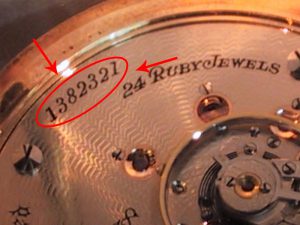

By 1899, their production was 8000 watches per day, and in 1901 Ingersoll advertised that their watches were sold for $1 by 10,000 dealers across the USA and Canada. The Ingersoll company is credited with perfecting an efficient system of distribution which included uniform pricing at all retail outlets. Manufacturing was carried out by contract with the Waterbury Clock Company and at two new factories owned by Ingersoll at Waterbury and Trenton, New Jersey. Workers at one of Ingersoll's watch factories The Ingersoll clock-watch was also offered at the 1892 Columbian Exposition for $1.50, where it is estimated they sold 85,000 watches! The positive response prompted Ingersoll to return to Chicago for the World's Fair in 1893, where a new clock-watch with the World's Fair emblem stamped into the case was a huge success. In 1892, Ingersoll placed an initial order for 10,000 watches from the Waterbury Clock Company, at a cost of 85-cents apiece, to be offered in their 1892 Ingersoll mail-order catalog at a price of $1. Both the New Haven Clock Company and the Waterbury Clock company had already produced inexpensive "clock-watches" that could meet the need that Ingersoll anticipated, but they had achieved neither mass-market success nor widespread distribution. In about 1880, Robert Hawley Ingersoll and his brother Charles Henry, operating in New York as a mail-order business, recognized the need for an inexpensive watch that nearly anyone could afford, to be sold for around one dollar. Ingersoll: The Watch that Made the Dollar Famous

It is estimated that Ingersoll sold 85,000 watches at the Columbian Expo at a price of $1.50 each. which carried sightseers to the amazing height of 260 feet. The 1892 Columbian Exposition and 1893 Chicago World's Fair featured a new attraction built by


 0 kommentar(er)
0 kommentar(er)
